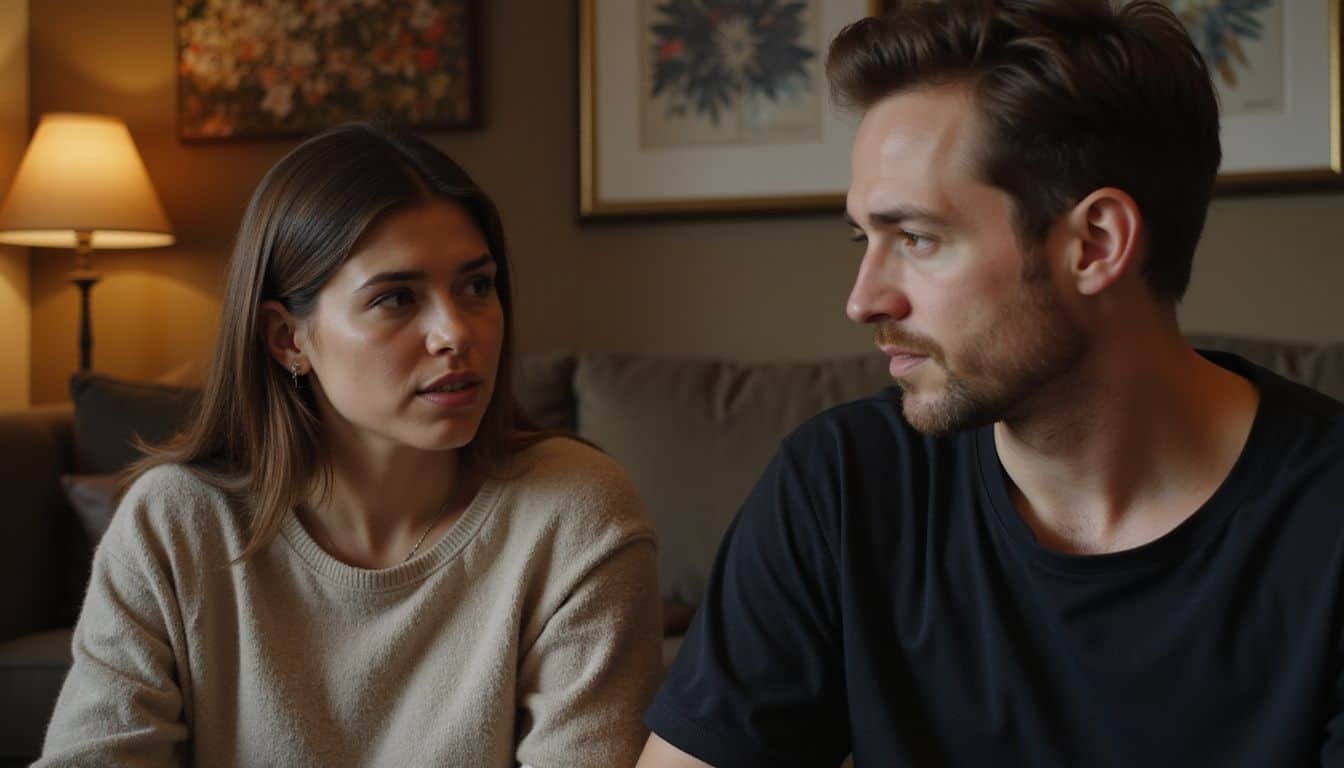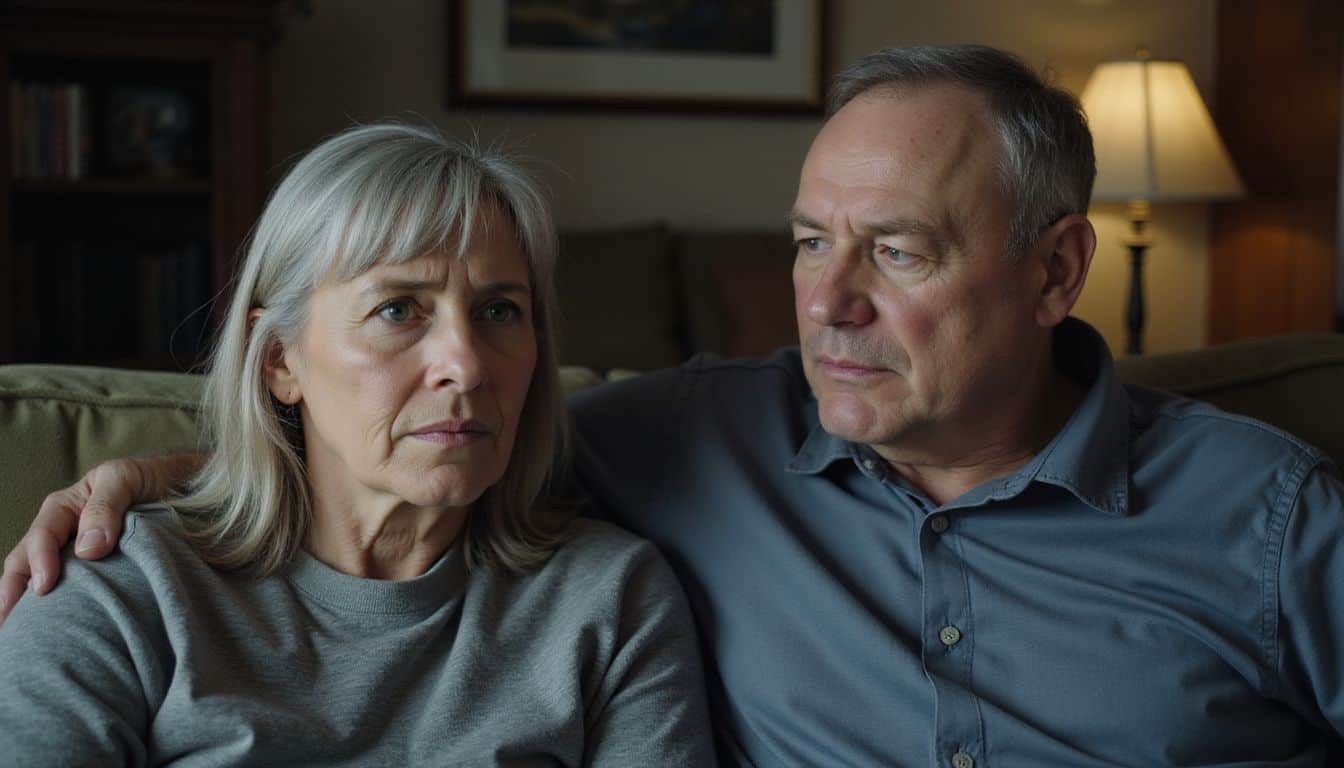Feeling unsure about boundaries or what’s okay on a date is common for many women. About 1 in 3 teens in the United States has faced dating violence, making it vital to understand clearly what is consent in dating.
This guide will show you easy and clear ways to set and talk through your limits, feel safe, and build trust with partners. Keep reading to discover how consent can help you date smarter and safer.
Key Takeaways
Consent is a clear, direct “yes” to physical or emotional closeness—it must be freely offered, without pressure, manipulation, or confusion.
About one-third of teens in the U.S. experience dating violence; this fact alone highlights why consent is essential for personal safety.
Silence does not mean consent—someone scared or unsure might freeze or become quiet but still not be comfortable.
Watch for verbal signals (“Yes”, “I want to”, “This feels great”) and physical clues like nodding, pulling you closer, or having a relaxed posture.
By 2025, dating apps will probably include new consent-focused features, helping users clearly set boundaries and feel more secure.
Table of Contents
What is Consent in Dating?

Consent in dating means both people agree to what happens between them. Clear consent builds trust and makes dating safer for everyone involved.
The definition of consent

Consent is giving a clear and enthusiastic “yes” to emotional or physical intimacy. It must always be voluntary, informed, and genuine from everyone involved—no exceptions. True consent occurs once each person freely agrees without feeling pressured, tricked, or threatened.
For details about recent changes, you can learn about consent laws. Healthy relationships mean respecting each partner’s right to freely say yes or no at any given moment.
Clear consent strengthens trust and open, honest communication between partners. It protects your personal freedom and right to decide what’s okay for your own body. Many assume silence means agreement—but that’s incorrect and dangerous.
Sexual intimacy without clear agreement can be sexual assault and may lead to serious legal trouble. Practicing clear, honest consent makes relationships safer and prevents hurt feelings or troubling situations.
Examples of verbal and non-verbal consent

Consent can show up in many clear and simple ways, making dating safer and way more enjoyable:
- Verbal consent means directly saying things like “Yes”, “I like this”, or “That feels great”. These phrases clearly express your comfort and interest.
- Saying “Let’s keep going” or “Don’t stop” actively shows openness to continuing contact.
- Checking in with statements like “Is this okay with you?” or “Are you comfortable right now?” makes sure your partner feels safe and respected.
- Non-verbal signs, like nodding your head, can communicate agreement without needing words.
- Giving a thumbs-up offers a simple way to signal you’re feeling good, especially if speaking feels weird at the moment.
- Pulling your partner closer during a kiss or hug clearly shows you’re comfortable with more closeness.
- Relaxed gestures, such as uncrossed arms and legs, usually mean someone feels safe and open to touch.
- Making enthusiastic sounds or happy noises can tell your partner you’re enjoying what’s happening.
- Smiling or keeping steady eye contact often indicates comfort, interest, and a desire to continue.
- Actively engaging—like returning kisses, touches, or gentle movements—shows mutual excitement and agreement in what’s happening.
What is Not Consent in Dating?

Consent gets tricky when pressure or fear enter the mix. Some people think silence means “yes,” but real consent needs clear signals, not just a lack of “no.”
Coercion and manipulation
 Coercion destroys genuine consent in dating situations. If someone pressures you through guilt-trips or emotional blackmail, they’re pushing you into sexual activities you’re uncomfortable with.
Coercion destroys genuine consent in dating situations. If someone pressures you through guilt-trips or emotional blackmail, they’re pushing you into sexual activities you’re uncomfortable with.
Many confuse quietness with consent—but true agreement is always given freely, without tricks or manipulation. I dated a person once who’d pout or give me silent treatment whenever I didn’t feel like being intimate—that was manipulation, definitely not respect.
Being in a relationship doesn’t grant automatic approval for sex—you always have the right to say no.
Some manipulators may use alcohol to weaken your defenses, or threaten the stability of your relationship if you refuse sex. These behaviors violate your personal boundaries and make relationships unsafe.
Sexual coercion can happen through verbal pressure, such as, “If you loved me, you’d do it”, or by creating an atmosphere of fear. If someone tries these tactics on you, speak up firmly and name their actions clearly.
Talk openly with friends you trust. Your safety is always the number one priority, whether you’re checking out senior romance or exploring newer dating relationships.
Silence or lack of resistance

Silence never equals consent—especially in dating situations. Many people become frozen or unable to speak during unwanted sexual advances. Freezing up does not indicate agreement or willingness.
Legally, no one needs to physically resist to prove an assault happened. That’s particularly important for both teens and adults who are involved in teenagers dating situations.
I once supported a friend who experienced such an encounter. She didn’t verbally say “no”, feeling too scared to speak—but her discomfort clearly showed through her body language.
Unfortunately, her silence was wrongly interpreted as agreeing.
True consent is never assumed from silence – it must be freely given through clear words or actions.
Being sexually active with someone who hasn’t clearly said “yes”, either verbally or through their behavior, could legally count as sexual assault. Such offenses carry serious legal penalties.
This guideline matters even more strongly if someone is drunk, under the influence, or unable to clearly make choices. Passivity alone cannot communicate permission. Healthy intimate relationships always involve clearly expressed consent through words or gestures.
Manipulation, pressure, or emotional blackmail in dating situations also weaken genuine consent—making agreement less clear, honest, or valid.
How to Practice Consent in Dating

Practicing consent in dating takes real effort and clear talk. You can start by setting firm limits and paying close attention to your date’s signals.
Communicating boundaries

Clear boundaries form the base of healthy dating habits. I’ve found that expressing my limits early can save me from uncomfortable situations later. You might gently say things like, “I like moving slowly with physical intimacy”, or “I’m not ready yet to share personal stuff”.
Being direct like this respects your feelings and gives your partner clear expectations. Many folks skip boundary talks because they’re worried about awkwardness—but openly talking through things actually helps everyone feel safer and calmer.
Setting boundaries isn’t only about saying “no”; it’s about sharing what you feel comfortable with and what you’d enjoy more often. Your comfort zone can shift with time, so frequent check-ins make sense.
Mutual agreement helps build trust in relationships. Quick check-ins like “Is this feeling alright for you?” or “I’d enjoy trying…” help build better understanding and closeness.
Keeping things straightforward also reduces pressure, making room for honest conversations about intimacy and personal comfort levels.
Recognizing and respecting non-verbal cues

Body language often says more than words do, especially in dating. Non-verbal consent shows up clearly through gestures like nodding, a thumbs-up, or gently pulling someone closer.
Pay close attention to signs like relaxed posture, easy movements, or happy sounds—they mean your partner is comfortable. But discomfort also shows clearly—tense shoulders, pulling away, turning the body elsewhere, or a worried look on the face.
I once dated a person who made a private signal system for intimacy. Two squeezes of my hand meant “I feel safe”, while a single squeeze showed “slow down”. This simple, personal code became our quiet way to check in during physical closeness.
Non-verbal cues often reveal more truth than words ever could in moments of intimacy.
Even though non-verbal communication says a lot, always confirm consent clearly through words. Silence or passive behavior does not signal permission for sexual activity. Many sexual assaults occur because a person misread or overlooked these important signals.
Protecting your partner’s autonomy is always the priority in intimate situations.
Now, let’s look ahead at what consent might mean for dating in the near future.
How Will Consent in Dating Evolve in 2025?

Dating apps in 2025 will likely introduce new consent technology—with safety as a central priority. These new tools will help users easily recognize if someone feels uneasy during dates or physical touch.
Input from women and LGBTQ+ communities will ensure they are effective and inclusive for all users. The concept known as “Consent Exchange” will become more common, encouraging open communication about personal preferences before meeting.
This open dialogue helps set clear boundaries early, building mutual trust right from the start.
Tech will add support—but can’t replace face-to-face consent conversations. Apps may offer features to share comfort levels on various activities or to notice how consent changes over time.
Even with digital assistance, verbal exchanges remain essential to obtaining affirmative consent. These tools aim to reduce sexual assault risks and create safer first date ideas for everyone.
The main goal is clearer, healthier talks about sex and consent, respecting the boundaries of each person involved.
People Also Ask
What is informed consent in dating?
Informed consent means both partners willingly agree to any sexual activity. It must be clear, ongoing, and freely given without pressure—and anyone can change their mind at any moment. Consent protects both people, helps create a safe dating experience, and prevents sexual assault.
How does alcohol affect consent to sexual activity?
Alcohol can cloud someone’s thinking and judgment, making real consent impossible. A person who is drunk or tipsy may not fully grasp what they’re agreeing to—so it’s best to wait until both partners are totally sober. That’s the safest way to ensure consent and protect everyone’s well-being.
What is enthusiastic consent?
Enthusiastic consent means both people clearly and excitedly agree to sexual activity. It’s more than a simple “yes”—it includes body language, words, and active excitement. Expressing real eagerness helps protect both partners and makes dating a safer, happier experience.
Can teens give consent?
Teenagers should fully understand consent before starting to date. Many states set age limits to decide who can legally consent to sex; it’s important to check these rules in your state. Teen dating violence often begins with ignoring or pushing someone’s consent boundaries, so good communication is critical for safety.
What is stealthing and is it a form of sexual assault?
Stealthing is removing a condom during sex without telling your partner. It completely breaks the condition of consent and places the other person at risk for sexually transmitted infections (STIs) or unwanted pregnancies. Many areas legally recognize stealthing as sexual assault.
How can I practice better consent in my relationships?
Always discuss boundaries openly before any physical contact. Be clear when asking permission for each sexual activity and pay attention to your partner’s verbal and non-verbal signs. Consent for one activity doesn’t automatically cover others, so be sure to check in often—good communication builds trust and respect.
References
https://comphc.org/understanding-consent-in-dating-relationships/ (2024-02-20)
https://care.ucr.edu/education/what-is-consent
https://uknowledge.uky.edu/cgi/viewcontent.cgi?article=1063&context=sociology_etds
https://inside.wooster.edu/title-ix/consent/
https://amiethedatingcoach.com/when-and-how-to-share-your-boundaries-in-dating/
